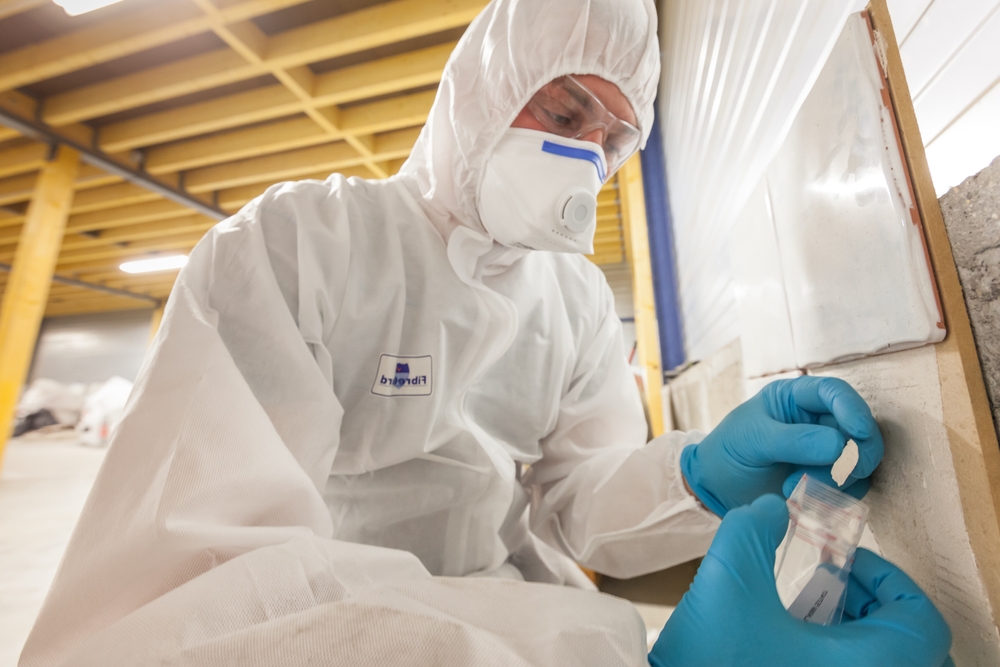The Complete Refine of Accredited Asbestos Evaluating to Ensure Home Conformity
In the realm of home administration and compliance, the process of accredited asbestos screening stands as an essential element to ensure the security and wellness of passengers. Understanding the complex actions involved in this testing protocol is paramount for homeowner and managers alike. From the initial evaluation to the last interpretation of results, each phase plays an important duty in establishing the visibility of asbestos within a home. Let's explore how this careful procedure unravels to assure adherence to rigorous guidelines and safeguard against potential carcinogen.
Accredited Asbestos Screening: First Analysis
In carrying out the first analysis for certified asbestos testing, a meticulous exam of the home's products is critical to accurately recognize prospective asbestos-containing materials. This crucial action includes visually evaluating all locations of the property, including ceilings, wall surfaces, floor covering, insulation, and various other building products that may harbor asbestos. Unique attention is offered to materials that are susceptible to damage or disturbance, as these scenarios can release damaging asbestos fibers into the air. Additionally, tasting of thought materials might be necessary to confirm the presence of asbestos through laboratory evaluation.
Recognized asbestos assessors adhere to stringent procedures set by governing bodies to make certain the accuracy and integrity of the screening procedure. By diligently documenting findings and using sophisticated testing techniques, assessors can give homeowner with a thorough report detailing the existence of asbestos, if any type of, and the suggested steps for mitigation or elimination. This initial assessment establishes the foundation for subsequent activities to deal with asbestos issues and make sure the security and conformity of the property.
Example Collection Procedures for Asbestos Evaluating
Efficient sample collection procedures are important in making sure accurate asbestos testing outcomes and compliance with regulatory criteria. When collecting samples for asbestos screening, it is crucial to comply with rigorous protocols to reduce the danger of contamination and make sure the reliability of the outcomes.
Firstly, it is necessary to identify the thought asbestos-containing products (ACMs) and prioritize sampling areas based upon variables such as the material's condition, access, and potential for disturbance. Asbestos Testing. Examples must be accumulated from various places within the building to supply a comprehensive analysis of asbestos existence
Throughout example collection, licensed professionals must wear suitable personal safety devices (PPE) to protect against asbestos exposure. They should make use of tidy tools, such as non reusable handwear covers and plastic sheeting, to stop cross-contamination between examples. Examples ought to be carefully accumulated utilizing a defined method, such as wet cleaning or coring, and firmly sealed in airtight containers to preserve their integrity throughout transport to the lab for analysis.
Research Laboratory Analysis Refine for Asbestos Examples
Upon completion of the example collection procedure, the asbestos examples are diligently transported to recognized research laboratories for thorough evaluation. The initial action in the research laboratory evaluation procedure is example preparation, where the collected examples are carefully refined to draw out the asbestos fibers.

When the analysis is full, a comprehensive record is produced, outlining the searchings for and confirming whether asbestos is existing, the kind of asbestos fibers find more information recognized, and the concentration levels. This information is crucial for homeowner to take the necessary steps to ensure compliance with asbestos guidelines and guard the wellness of occupants.

Reporting and Interpretation of Asbestos Examination Results
Recognized asbestos screening labs supply in-depth records that provide crucial insights right into the existence, type, and concentration degrees of asbestos fibers discovered in examples gathered from residential or commercial properties. These records are essential for property proprietors and supervisors to recognize the threat presented by asbestos and make informed decisions regarding its management or elimination. The reports normally include details on the approaches utilized for testing, the areas from which examples were taken, the kind of asbestos identified (such as chrysotile, amosite, or crocidolite), and the focus degrees of asbestos fibers discovered.
Translating these results calls for know-how to analyze the prospective health threats connected with asbestos direct exposure, determine the suitable training course of activity, and make sure regulative compliance (Asbestos Testing). Depending upon the findings, suggestions might vary from continued tracking and maintenance to encapsulation or complete asbestos abatement. Homeowner should carefully Visit Your URL examine these records and talk to asbestos experts to establish a detailed strategy for attending to any kind of asbestos problems identified
Ensuring Residential Or Commercial Property Compliance With Asbestos Rules
To keep adherence with asbestos laws, homeowner must carefully execute procedures to make sure conformity with relevant laws and guidelines. This consists of carrying out routine asbestos assessments by recognized professionals to identify any type of presence of asbestos-containing products within the residential property. As soon as asbestos is identified, residential property proprietors have to follow asbestos monitoring intends that rundown proper containment, removal, or encapsulation treatments to avoid direct exposure and spread of asbestos fibers. Compliance also involves keeping in-depth documents of asbestos screening, upkeep, and removal tasks for examination functions.
Property proprietors ought to supply asbestos understanding training to workers and occupants to minimize the threat of asbestos direct exposure and make certain appropriate handling of materials that might consist of asbestos. Additionally, it is crucial to stay notified regarding any updates or adjustments in asbestos regulations to change administration practices appropriately. By proactively dealing with asbestos compliance demands, building proprietors can create a safe atmosphere for residents and reduce potential lawful and health risks connected with asbestos exposure.
Final Thought
To conclude, accredited asbestos testing is an essential procedure for making sure residential or commercial property compliance with policies. The initial analysis, sample collection treatments, lab evaluation, and interpretation of results are all essential steps in this process. By complying with these procedures, residential property owners can recognize and attend to any kind of asbestos risks existing, securing the health and security of occupants and preserving conformity with regulatory demands.